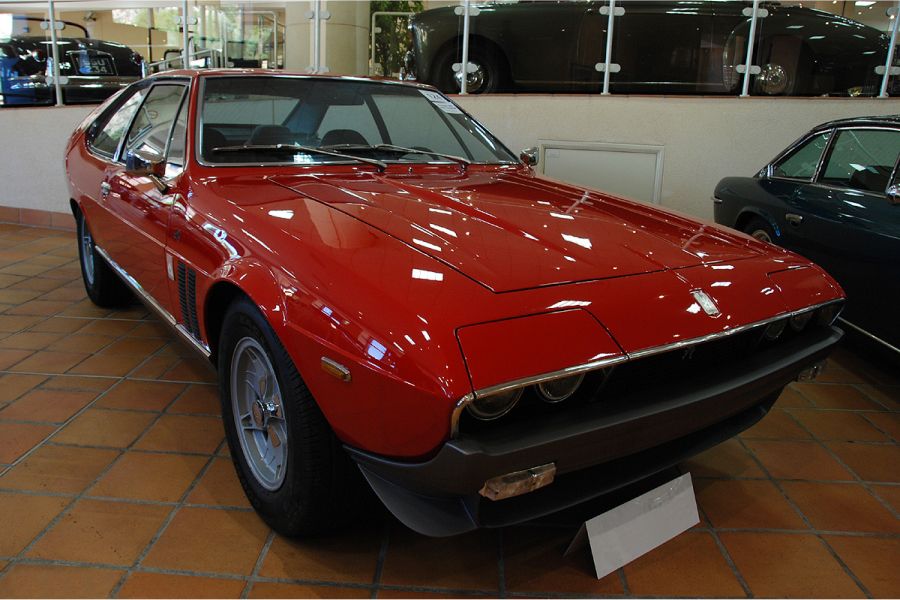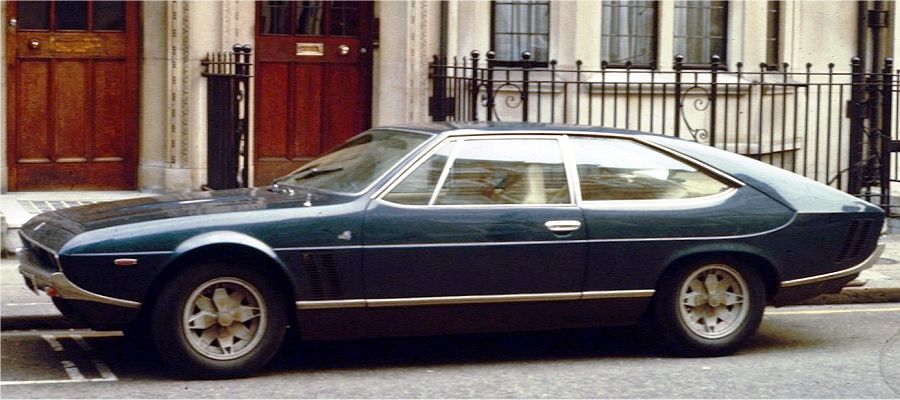Description
The ISO Lele IR6 Sport was the most potent and dynamic evolution of ISO’s elegant four-seat grand tourer — a car that brought sharper performance, more assertive styling, and an unmistakably sporting character to the refined Lele line. Introduced in 1971, the IR6 Sport represented the pinnacle of the Chevrolet-powered Leles before ISO transitioned to Ford engines under Alejandro de Tomaso’s ownership. It was the final expression of Piero Rivolta’s original vision: a car that could combine the power and reliability of an American V8 with the design precision and handling finesse of a hand-built Italian gran turismo.
The Lele Sport was born at a time when ISO sought to inject new life into its model range. The original Lele IR6, launched in 1969, had been praised for its modern Gandini styling and grand touring comfort, but some critics and customers desired a more athletic personality — something that would bridge the gap between the sophisticated IR6 and the ferocious Grifo 7 Litri. The Sport answered that call. Mechanically, it remained faithful to ISO’s proven formula, but refinements to power, suspension, and aesthetics gave it a distinctly more purposeful edge.
At the heart of the Lele IR6 Sport was the legendary Chevrolet 350 cubic inch (5.7-litre) small-block V8, replacing the earlier 327 engine. In Sport specification, this engine was tuned to produce approximately 360 horsepower, thanks to a higher compression ratio, performance camshaft, and revised carburetion using a large four-barrel Holley unit. The powerplant was mated to a close-ratio five-speed ZF manual gearbox, delivering strong acceleration and effortless high-speed cruising. With this setup, the Lele Sport could sprint from 0 to 100 km/h (62 mph) in around 6.5 seconds and reach a top speed of approximately 250 km/h (155 mph) — making it one of the fastest four-seater grand tourers of its time. A three-speed GM Hydramatic automatic transmission remained available, but most buyers of the Sport chose the manual for its engagement and control.
The chassis, already one of the most sophisticated in its class, was fine-tuned for more responsive handling. It retained ISO’s hallmark pressed-steel monocoque construction with a tubular front subframe, providing exceptional rigidity and strength. The independent front suspension used unequal-length wishbones and coil springs, while the rear de Dion axle — one of ISO’s engineering trademarks — offered a superb balance between ride comfort and cornering stability. The car sat slightly lower than the standard Lele, with firmer springs and recalibrated dampers to reduce body roll and sharpen turn-in. Wider Campagnolo alloy wheels and performance tyres completed the transformation, giving the Sport a more planted and assertive stance on the road.
Visually, the Lele IR6 Sport distinguished itself through subtle but purposeful refinements. Marcello Gandini’s original design — a study in angular elegance — was enhanced with a deeper front spoiler, discreet badging, and improved cooling intakes. The body’s crisp lines, long bonnet, and sharply cut Kamm tail remained intact, but the overall impression was of a car with greater intent. The front end retained its concealed headlamps, giving a smooth, aerodynamic face, while the profile remained unmistakably Gandini: clean, geometric, and perfectly proportioned. Chrome trim was reduced, replaced by satin finishes and darker accents that emphasized the car’s sporting nature.
Inside, the Lele Sport offered the same sense of craftsmanship and luxury that defined all ISO cars, but with a slightly more focused atmosphere. The cabin featured deeply bolstered Connolly leather seats for improved support, a thick-rimmed steering wheel, and a revised instrument layout with a full complement of Veglia gauges. The dashboard, trimmed in walnut veneer, was both elegant and functional, with improved ergonomics for the driver. The large tachometer and speedometer sat directly in front of the steering wheel, while secondary dials for oil pressure, voltage, and fuel were neatly arranged across the centre panel. Despite its increased performance, the Sport remained a true grand tourer — comfortable, spacious, and quiet at speed, with air conditioning, electric windows, and Becker audio available as options.
On the road, the ISO Lele IR6 Sport delivered the sort of performance that made it a true rival to the Ferrari 365 GT 2+2 and the Maserati Indy. The Chevrolet 350 was a masterpiece of flexibility — muscular at low revs, responsive in the midrange, and gloriously smooth at high speeds. The combination of American torque and Italian chassis precision made the car immensely satisfying to drive. The steering was light but communicative, the suspension supple yet taut, and the brakes — ventilated discs all around — powerful and fade-resistant. At high speed, the Lele felt rock-solid, gliding effortlessly along the autostrada with a sense of mechanical calm that few contemporaries could match. Pressed harder on mountain roads, it revealed balance and poise that belied its size, its de Dion rear axle keeping the car stable and predictable even through fast, uneven corners.
The Lele Sport also introduced small but meaningful improvements in refinement. ISO’s engineers paid close attention to sound insulation and cabin vibration, making the car noticeably quieter at cruising speeds than the earlier models. The five-speed ZF gearbox shifted with precision, the clutch was progressive, and the throttle response immediate. It was the kind of car that could cover long distances in a single stride — luxurious yet alive, powerful yet composed.
Production of the ISO Lele IR6 Sport was limited, as with all models from the boutique manufacturer. Of the approximately 125 Chevrolet-powered Leles produced between 1969 and 1972, only a small portion — likely fewer than 30 — were completed in Sport configuration, making it one of the rarest ISO variants. Its introduction marked both the high point and the twilight of ISO’s independence: by 1972, Ford engines had replaced the Chevrolet units, and the company would soon be absorbed into De Tomaso’s industrial network.
Today, the ISO Lele IR6 Sport stands as one of the hidden gems of Italian grand touring history. Collectors and historians regard it as the purest and most performance-oriented expression of the Lele lineage — the last ISO to carry the full Rivolta engineering DNA and the last to combine Gandini’s design with Chevrolet power. Its blend of sculptural design, hand-built luxury, and muscular performance captures a unique moment in motoring history when grace and strength coexisted in perfect harmony.
The ISO Lele IR6 Sport was, in many ways, the finest embodiment of ISO’s ideals: a car of restrained power, intelligent design, and effortless ability. It represented the end of an era for the Rivolta family’s automotive dream, but it left behind a lasting legacy — that true grand touring excellence lies not in extravagance, but in balance. With its crisp Gandini styling, mighty small-block heart, and timeless poise, the Lele IR6 Sport remains one of the most distinctive and rewarding Italian GTs ever built.


